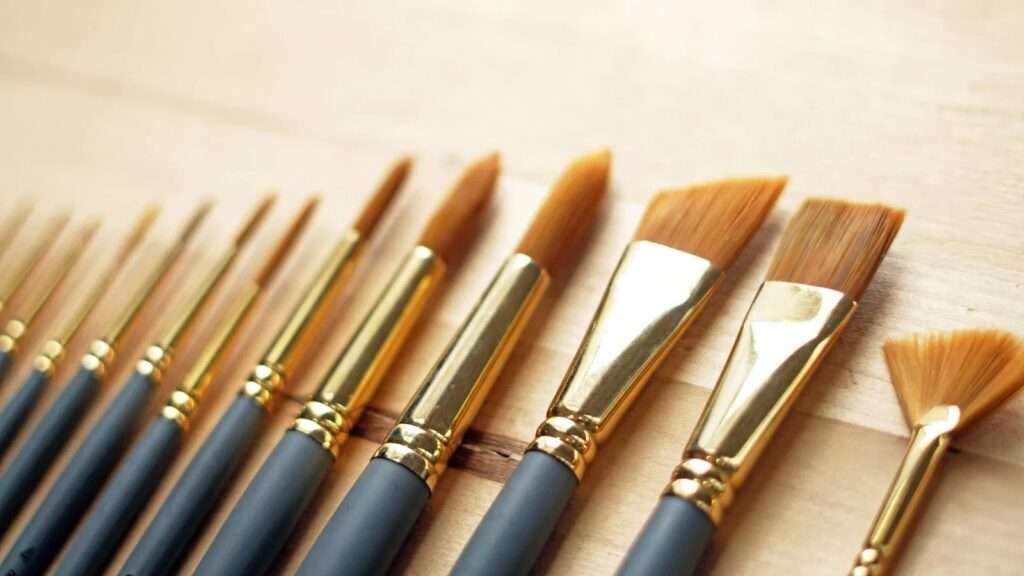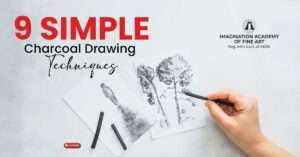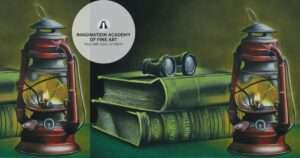Acrylic painting is a popular medium for artists of all levels, from beginners to experienced painters. Here is a guide to help you get started with the basics of acrylics.

Introduction: What is Acrylic Paint and What You Need to Know Before Getting Started
Acrylic paint is dynamic, flexible, and water-bsed paint that is popular among both professionals and amateurs. These paints were first brought to the market in the 1940s, and have become quite popular due to their unusual working capabilities. They dry rapidly and can be thinned or washed with water, making them ideal for beginners!
If you’re just starting out, the variety of colors, brushes, palettes, and surfaces available might rapidly become overwhelming! And if you’ve worked with oils or watercolors before, you might find them weird at first. But don’t worry; with our acrylic painting tips and tricks, you’ll be painting like a pro in no time!
5 Essential Tips for Getting Started with Acrylic Painting
Work Swiftly
Acrylic paint dries faster than other paints. This is a fantastic advantage if you want to paint in layers, but the shorter labor time might be intimidating for beginner painters.
To work quicker, always have a concept of what you want to paint in your brain and get it on the canvas as soon as possible. The longer you paint the same places, the less sensitive your acrylics will become. If you need additional time to work, you may use an acrylic retarder or a little dabbing of water if you’re working on paper.
Don’t Overfill Your Pallet with Paint
When working with acrylics, you must be cautious not to over-paint your palette. So, be careful since they might dry and harden while you’re waiting for a different chance to apply that color.
Additionally, if you need more, you can simply squeeze extra out of the tube. Remember, it won’t go back into the tube, so don’t waste it. If you need to keep your palette intact overnight, spritz it with water, cover it with an airtight bag or container, and your paints should last for a short while.
Blend With Caution
Blending your colors is a terrific technique to broaden your palette and create a more colorful environment on your canvas, but you must mix correctly. If you blend too quickly, you will generate bubbles in your paint that will pop up on your canvas and dry, which is not the effect you want when painting a beautiful work of art that you will love for the rest of your life.
Clean Your Brushes with Soap and Water
Although other forms of paint, such as oils and oil mediums, may require you to clean your paintbrush with turpentine or mineral spirits, this is not essential with acrylics. With acrylics, all you need is a little soap and water to clean your brushes, and it will wash right off.
Make Opaque Colours Without Using Any Media
Any color can be converted into an opaque hue when thoroughly combined with titanium white. This will give you the desired opaque or even transparent hue. We recommend not adding any water to the mixture and instead leaving it thick with only the titanium white and color of your choosing.
However, you may add a little water to it to make it appear more watercolor-like.
These 5 essential acrylic painting tips can help you improve your painting skills, save time, and improve the quality of your paints. To learn more basic tips for acrylic paintings you can refer to this video – Acrylic Tips & Techniques, Acrylic painting,Acrylic painting for beginner,Acrylic painting on canvas – YouTube
Exploring Different Types of Brushes and When to Use Them in Your Paintings
Painting brushes come in a variety of sizes, styles, and bristle types. Each of these serves a particular purpose and adds features to the picture in its own distinct way.

Wash Brush
The largest of the bunch is an acrylic wash brush with a square end and medium to long strands. Since it is thicker than any other brush, it provides maximum coverage smoothly and swiftly while varnishing. It produces powerful strokes and may be used to make thin lines, straight edges, and stripes.
Angled Brush
The angled brush, as the name implies, has an angled or slanted tip. Some may even refer to it as a shader because of its versatility in covering tiny to large regions with no effort. It’s ideal for curving strokes and filling in corners.
Flat Brush
The flat brush is a little version of the wash brush. The flat brush is not as thick as the wash brush, which has bristles with somewhat round corners. The flat brush is ideal for use when you need to cover a large area with paint but the surface you are working on is too tiny for a wash brush.
Fan Brush
A fan brush is flat and has scattered hairs, making it an excellent choice for painting natural aspects and landscapes. It may also be used to blend backgrounds and provide subtle highlights to darker regions. You may use a fan brush with natural hairs for smoothing, blending, and feathering, or you can use a fan brush with synthetic hairs for fascinating textural effects and leaves on trees.
Round Brush
A round brush is thinner than other brushes and allows you more control over the flow of paint. There are primarily two types of round brushes. One is a basic circular brush with a sharp point that may be used to paint delicate lines and details. The other round brush will be even smaller than the round brush with the sharper tip. It is ideal for capturing subtle lines and details in sensitive regions.
Liner Brush
Liner brushes, sometimes known as rigger brushes, are thin brushes with extremely long bristles. This brush’s tip can be flat or square, and if it’s angled, it’s called a sword brush. This is the brush to use if you want to make very delicate and thin lines. Because the brush has such a small point, it is frequently used to create letters and figures. This brush is commonly used by artists to sign their work. And, believe it or not, this really thin brush can contain a lot of paint.
Filbert Brush
A filbert brush is a flat brush with medium to long hairs that finish in a rounded tip or an oval form. When used on its side, it creates a gorgeous delicate line and large brushstrokes when used flat. It is a cross between a round and flat brushes, with the ability to add details to your work as round brushes and cover greater space as flat brushes. The filbert brush, with its multitude of markings, has become a favorite of many artists, particularly figurative painters.
Conclusion
Now that you know all about the essential acrylic painting tips and different types of paintbrushes, you wouldn’t get flustered while creating your first masterpiece. You can now forget about your concerns and have fun with this color game as all you need to do is choose a canvas and let your imagination run wild!




